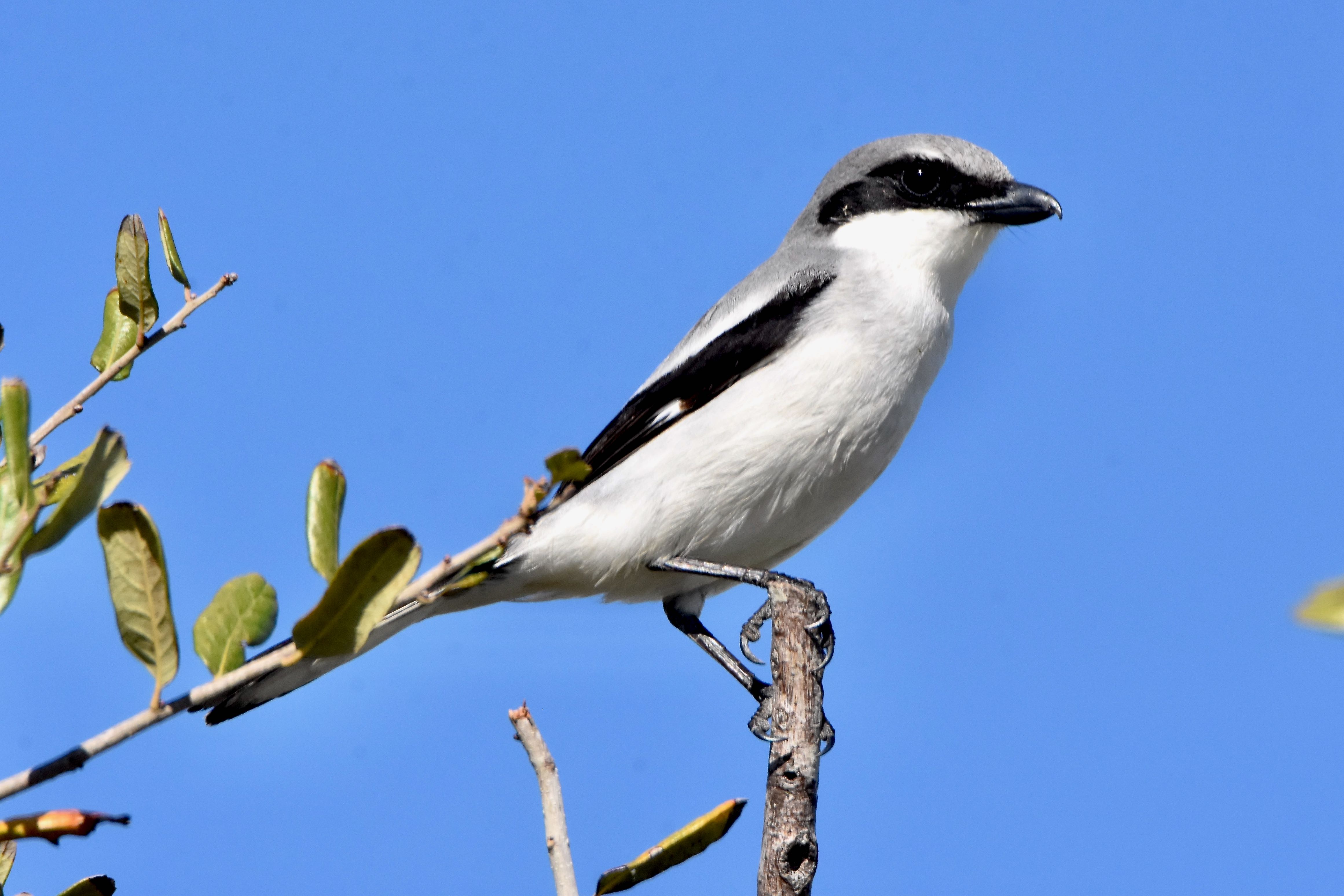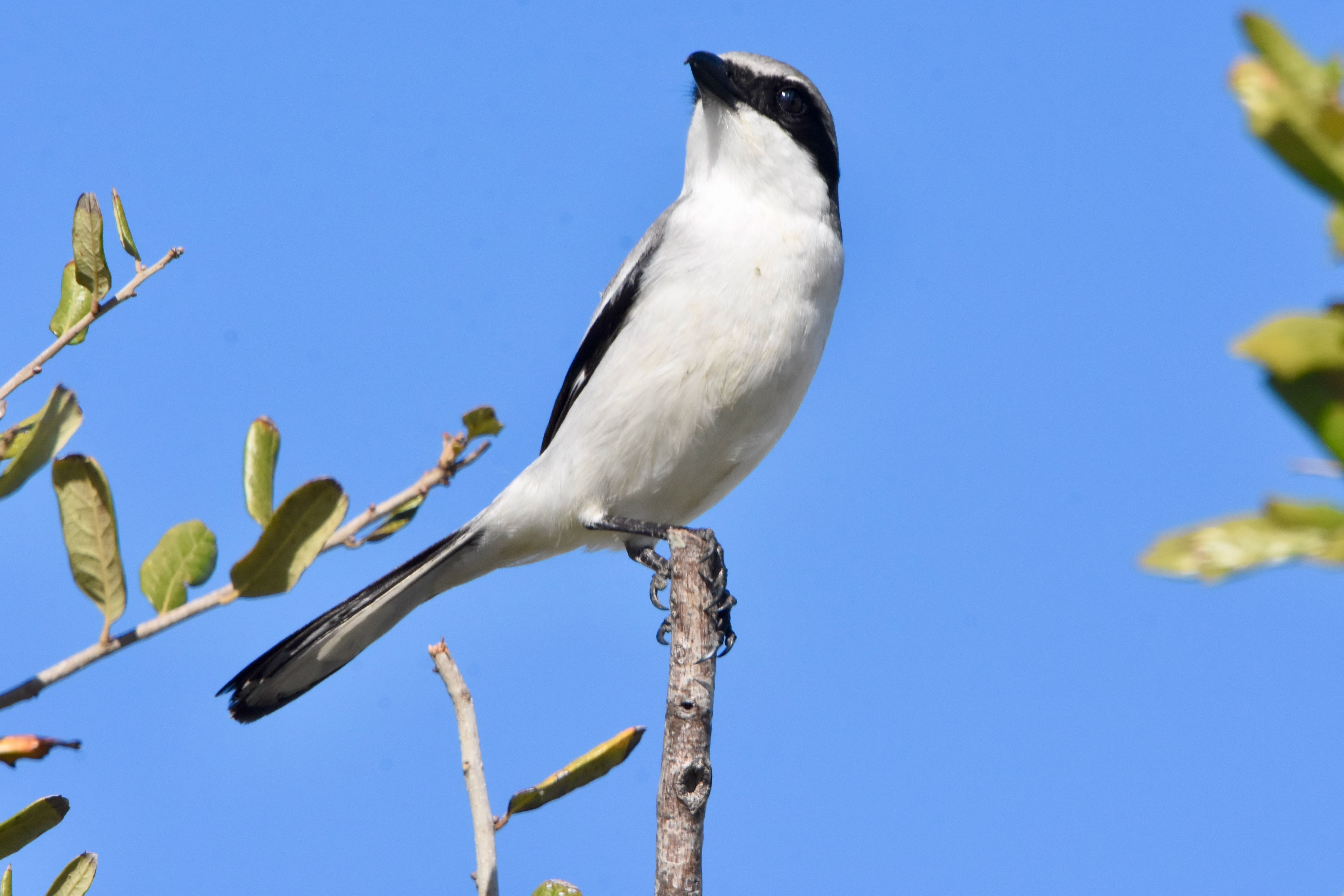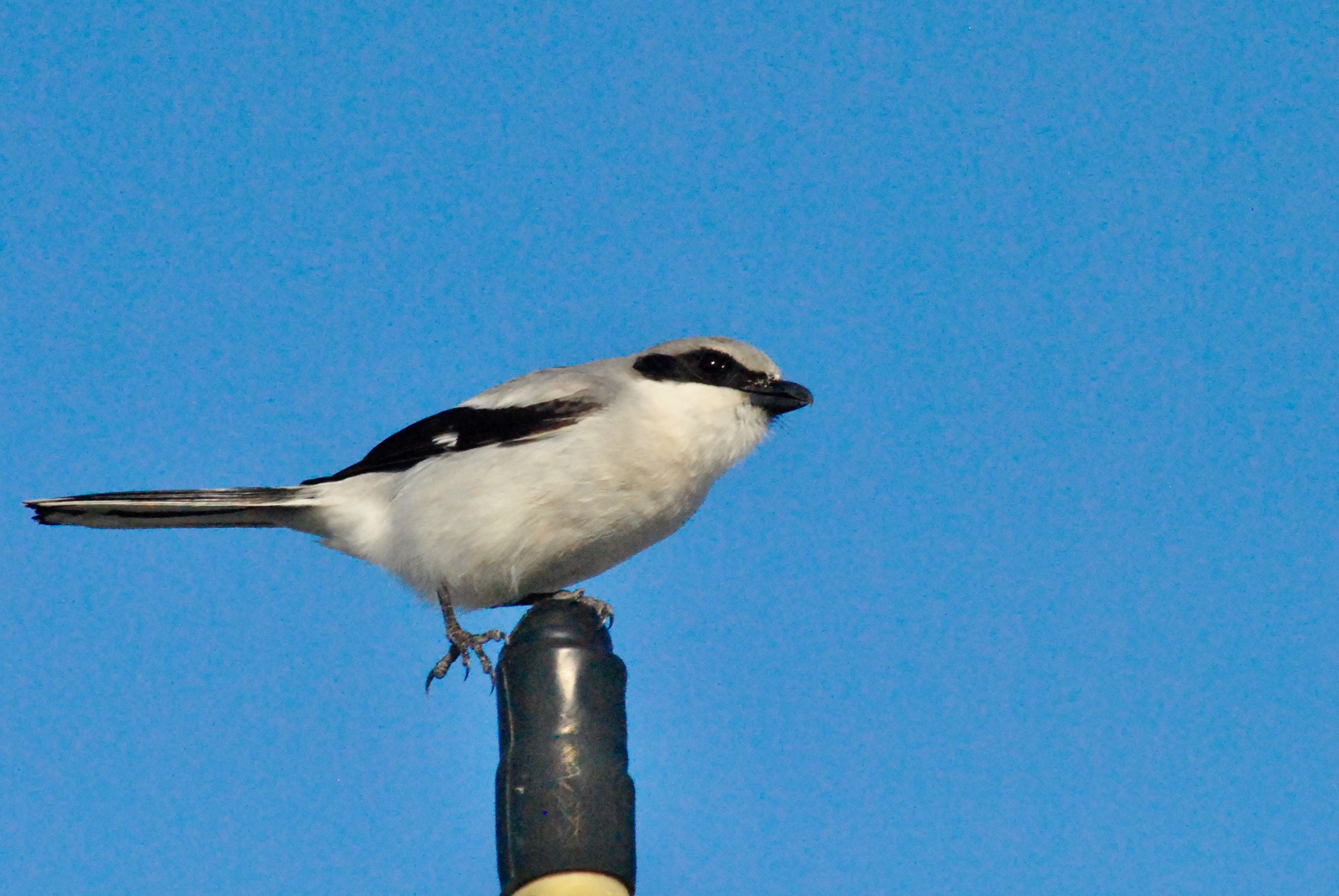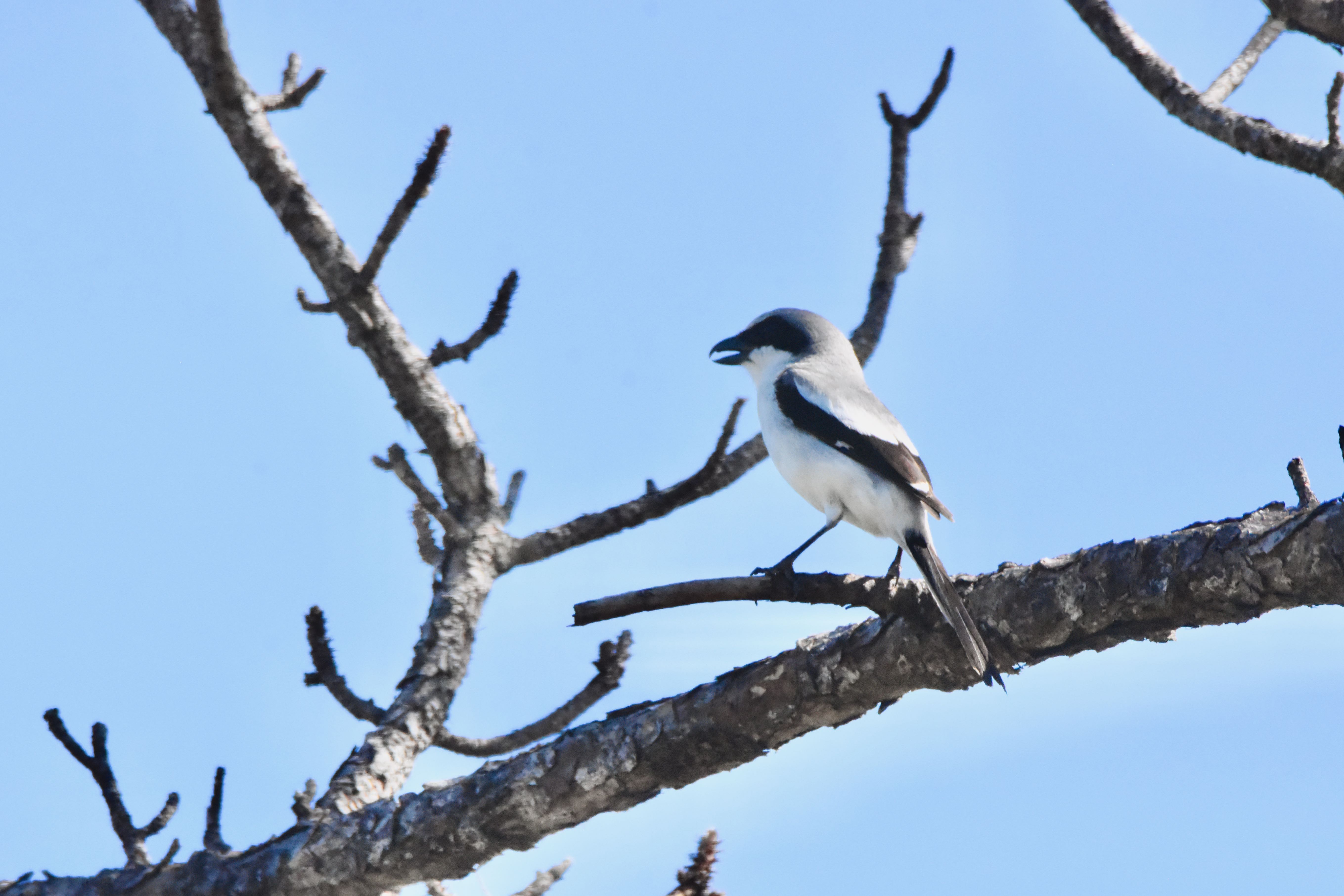
Loggerhead Shrike, photographed at the Holey Lands Wildlife Management Area, western Palm Beach County, in December 2017.
The loggerhead shrike, Lanius ludovicianus, looks like just another songbird. Intimidating it ain't. That is until you get a close look at the curved beak and the idea pops into your brain that something else must going on with this bird.
And you'd be right. Despite its relatively diminutive size, the loggerhead shrike is a bird of prey as well as a songbird. Its nickname: the butcherbird.
Despite its lack of stature, it is able to carry prey as big as itself. It has a body length of about nine or 10 inches and wingspan of about a foot. It is a gray bird, with a black mask, black wings with a white patch and a black tail. Its bill is short, curved raptor-like at the tip but it doesn't have raptor-like talons. It does have extraordinary eyesight that enables it to spot a grasshopper — a favorite food — at 70 yards.
The loggerhead is a year-round resident of South Florida as well as much of the southern and central United States. There are also migratory populations that spend the summer farther north into Canada and winter in parts of Texas and Mexico.
It lives in open places with a few trees or shrubs for perching, or in forests with open areas adjacent. It's particularly fond of trees and shrubs with thorns or spines, which serve two purposes, one obvious, the other not so much. It tends to perch on posts, signs, fences, barbed wire and in trees and shrubs, where it scans for a meal, which might be a bug, a bird, a reptile or a rodent. When it sees a tasty meal, it will swoop down, perhaps hover for a second and hit its target. Small prey will be eaten right away; larger items will be hauled off to a thorny tree or shrub, where the hapless victim is impaled and stored to be eaten at a later date.
That habit of impaling its prey is one theory we've read that allows loggerheads to eat bugs that would be toxic to other animals. As the theory goes, storing the meal allows time for volatile poisons to break down into harmless substances. Loggerheads are one of the few animals able to eat the otherwise toxic eastern lubber grasshopper. A second theory: shrikes have learned to eat the head and abdomen of the lubber while tossing away the poisonous thorax.
Vertebrate prey are attacked at the nape; loggerheads have sharp projections in their upper bill called tomial teeth that bore into the prey's spinal chord and paralyze it.
Nesting season begins as early as February. Loggerhead shrikes often nest in thorny bushes and trees for the protection that they afford. Both males and females select the site and gather material, with females doing the assembly.
Shrikes nest in trees anywhere from as low as three feet off the ground to as high as 30. They pick a spot in a crotch affording strength and amid dense foliage for concealment. Females lay as many as a half-dozen eggs; they also handle incubation duties, while males bring food. The eggs hatch in a little more than two weeks; both parents feed the brood, which stays nest-bound for about three weeks. Juveniles stay with their parents for three or four weeks after fledging. A pair might have as many as three broods during a season.
Loggerheads aren't considered imperiled globally but their numbers are dwindling. In the northeast, it's all but disappeared for reasons unknown. New York lists it as endangered. Loggerheads are members of Landiidae, the shrike family.



